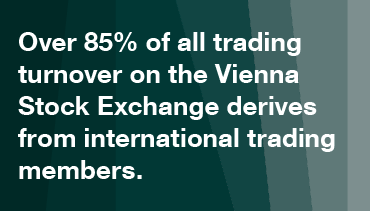Xetra® T7 supports several trading procedures. Continuous trading with several auctions, trading with only one auction per trading session and continuous auction.
Continuous Trading
Continuous trading starts after the end of the opening auction. In Xetra® T7, each order is first entered into an electronic order book in which buy and sell orders are displayed opposite each other. In continuous trading, the order book is open, showing aggregate order volumes along with applicable limits. As soon as buy and sell orders are matched, they are executed automatically by the system.
One advantage of the trading procedure continuous trading is that trades can be concluded at any time during the trading session without the need to wait for an auction. The liquidity providers (market maker) enter firm buy and sell quotes into the trading system continuously thus are increasing the liquidity of the market.
Auction
With auctions, the liquidity available in a security is concentrated at a specific point in time. An auction consists of the call phase and the price determination. Prices are determined according to the principle of executing as many orders as possible. The auction price is the price at which the largest volume of orders can be executed and the fewest are left unfilled. The order book is open during the call phase. An indicative price of the best buy/sell limit is quoted to inform market participants of the market situation. An auction schedule is published to announce the times when specific securities are called.
Continuous Auction
Trading takes place throughout the trading day and starts with the pre-trading phase which is followed by the main trading phase and afterwards by the post-trading phase. The start of the main trading phase is triggered at the end of the pre-trading phase. Orders are matched in auctions. Generally, an auction has two phases (pre-call phase and an optional call phase) and the price determination phase. During the pre-call and call phase, all market participants may enter, change or delete orders. Furthermore, exchange members acting as liquidity providers may enter or delete quotes.

